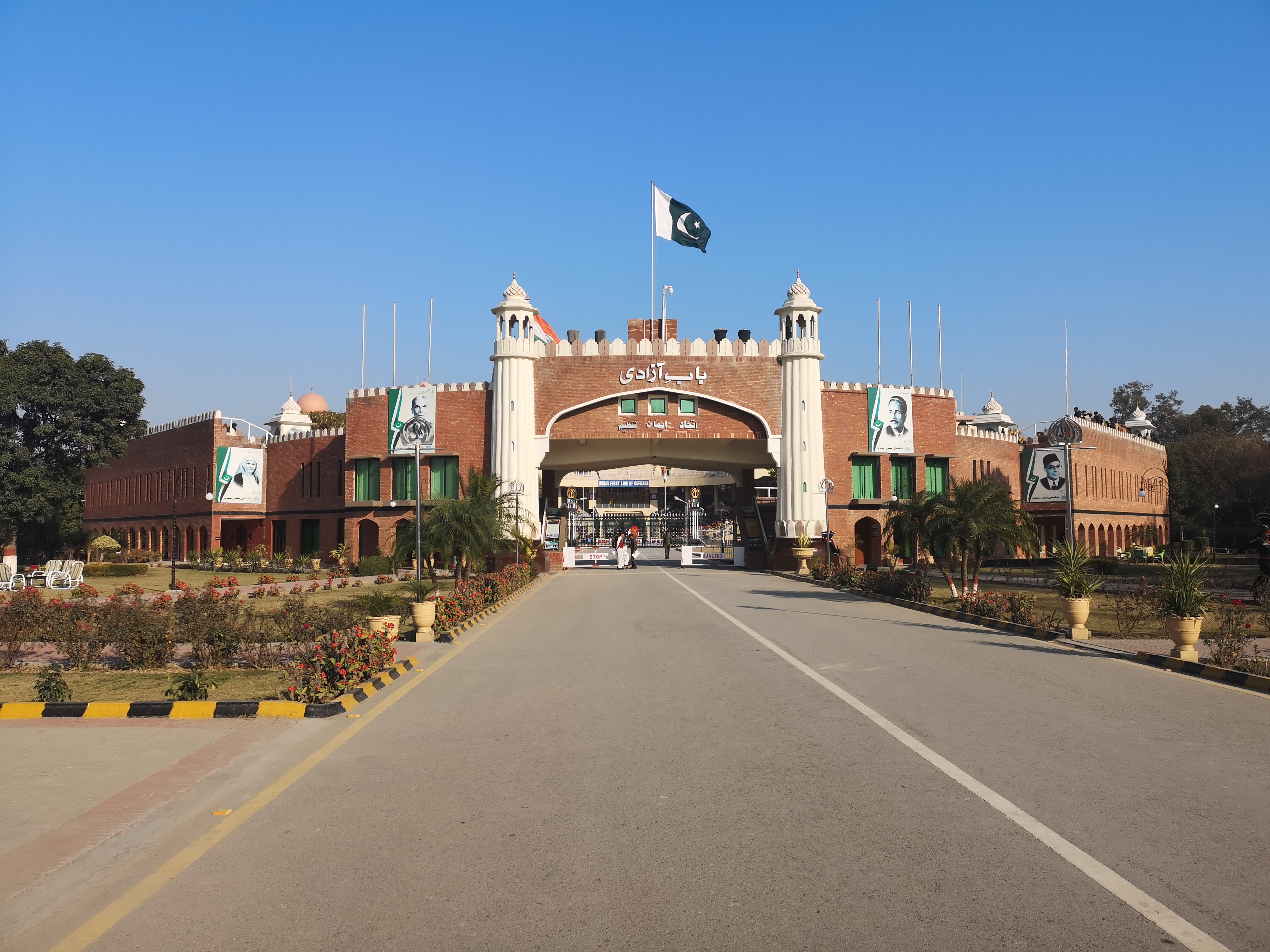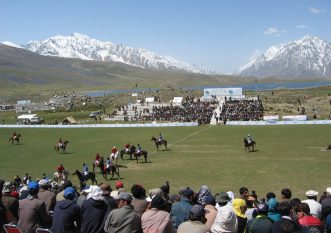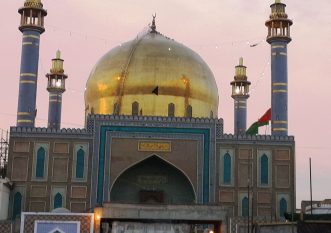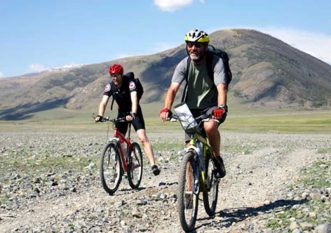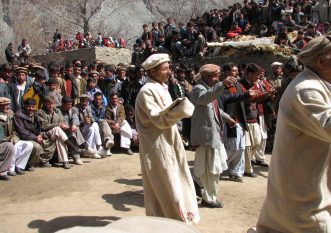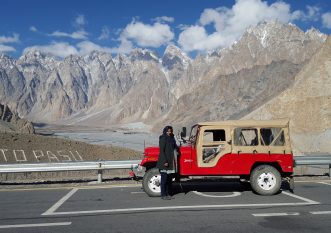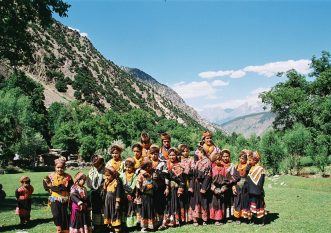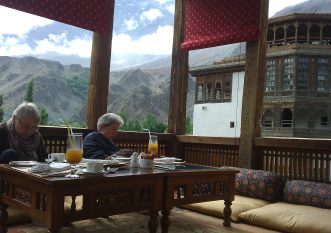Autumn Colors of Hunza Valley Pakistan
Welcome to the Land of Hospitality and Nature
Day-1
Arrival Islamabad, after breakfast drive to Taxila.
Taxila: Taxila: Sightseeing of ruins: Jaulian Monastery, Taxila Museum. Taxila is only about 30 kilometers from Rawalpindi, a little off the main highway. Steeped deep in history, the excavations at Taxila take you back 2,500 years into the world of Buddha, Alexander, Asoka and of course the Emperor Kanishka whose imprints are visible to this day. It is here that the world’s most interesting civilizations took roots. It is here that you find endless images of Buddha. You find these in stone and in stucco. Important stages of Buddha’s life are depicted in the numerous panels that have been uncovered here. This great man of peace is depicted in exquisitely carved sculptures and statues glorifying him and his life. Each one of these sculptures is a collector’s pride & visit truck & bus painting workshop. Hassan Abdal (Sikh temple) – It is famous for Gurdwara Sri Panja Sahib, one of the most sacred places of Sikhism. Thousands of Sikhs visit across the world the Gurdwara on the eve of Besakhi every year. Drive to Besham in the afternoon, at Mansehra, we will have a short break to see Ashoka’s Rocks Edicts on boulders dating as back as 3rd century BC. Driving time is 10 hours with breaks and distance is 275 KMs, Besham is situated at an altitude of 850 meters. Overnight at a hotel.
Day-2
Drive to Chilas (6 hours), Visit Shatial rock carvings:
Drive to Chilas en-route stop at Shatyal rock inscriptions. This morning, a life time adventures begins from Besham, leaving the green hills behind, we start driving our day in the black rocks on Karakoram Highway, carved by the brave hearts of Pakistan and China. At Shatyal we take a break to visit the rock carvings left by traders, Buddhist pilgrims and historians on their way to Taxila and Middle East. Overnight at a hotel
Day-3
Drive to Tato & trek to Fairy Meadows:
Drive to Raikot bridge (1.5 hr) where we will leave our car and take jeep to reach to Tato (2 hrs). From Tato there is another three hours trek to Fairy Meadow. As we reach our camp late afternoon, we will take rest at an Alpine Hut surrounded by trees and lush green meadow.
Day-4
Free day or day hike to Nanga Parbat Base camp and back to Fairy Meadow for overnight:
The optional day hike up to Nanga Parbat base camp does involve a relatively long day of trekking. The trek follows a walk on a narrow goat path along a ridge overlooking Raikot Glacier; it descends to a stream originating from the melting Ganalo Glacier. Once cross the stream, the trek rises to the top of a ridge on the base of the snowy mountains. Another descent leads to a narrow reach of Ganalo Glacier marked by ice walls and big boulders affording access across the glacier. Following the glacier, the trek rises again leading now to a wider grassy plane and meadows in the wilderness with wild flowers above the tree line. Nestled between the monumental peaks, Nanga Parbat base camp (3,967m) offers breathtaking views of the surrounding mountains, glaciers and huge masses of snow and frozen world.
Day-5
Trek to Tato and drive to Gilgit. Visit Kargah Buddha, after lunch drive to Karimabad Hunza:
Trek to Tato and drive to Gilgit, it is located in the heart of the Karakoram Range, surrounded by lofty peaks, the most majestic being Rakaposhi. Gilgit is both accessible by road and by air; the road, journey along the path of the ancient silk route, is an unforgettable experience through winding valleys and tumbling waterfalls. We will visit Kargah Buddha, a rock carving beside the Kargah Nullah (steam) 6km west of Gilgit along the old road to Punial, is the most popular short outing from Gilgit. The Buddha figure is about 3m tall and looks down protectively over Gilgit. It was carved in the 7th century and its workmanship reveals a talented master. After lunch drive to Karimabad, the former capital of Hunza Valley, a princely state. The natural beautify of Hunza valley and hospitality of its people is beyond description. We will rest in the afternoon at our hotel.
Day-6
Visit to Altit & Baltit Forts, hike to Duiker. After sunset drive to Gulmit for overnight:
We will start our day by visiting fairy-tale like castle of Baltit, above Karimabad, is a landmark built about 900 years ago, in 2004 tentatively enlisted UNESCO’s World Heritage. After visit of Baltit Fort, we will walk along Barbar irrigation channel with striking view of Karakoram mountains adds more essence to our journey. After lunch at a traditional Hunza home, we will visit Altit Fort and Duiker. We will witness the mesmerizing sunset view at Eagle’s Nest Duiker and an awe-inspiring view of Hunza. Duiker is situated at an altitude of 2935 meters high above sea level. Drive to Gulmit for overnight.
Day-7
Gulmit-Passu – Gilgit, overnight in hotel:
Gulmit is the capital of Gojal, is a small village at about 2400m, well above the flooded river. Much has changed here since the rise of the new ‘Attabad Lake’. There are also many superb day walks near the Karakoram Highway from Gulmit. The Gulmit Museum, full of traditional ethnic artifacts, is in a room of Raja Hussain Ali Khan’s house, beside the Marco Polo Inn, and is well worth a visit. Old Gulmit is at the north end of the polo ground. Here you will find the Mir of Hunza’s summer residence, which is no longer used, the old Shia mosque with carved woodwork, the Tomb of Silum Khan III, water mills and old houses. Drive to Passu, offer some of the best day walks and longer hikes in the area. The village is over 150 years old and owns the grazing rights up the north side of the 56km long Batura Glacier, so is able to support large herds of yaks, cattle, sheep and goats, but is less fortunate with its agricultural land. Drive back to Gilgit for overnight in hotel.
Day-8
Gilgit –Islamabad/Besham:
Flight to Islamabad (subject to weather) or drive to Besham (8-9 hrs), overnight at hotel. In case of flight, half day city tour of Islamabad. In sharp contrast to the ancient and historical cities and towns of Pakistan, the Federal Capital Islamabad is a new city modeled on the pattern of many new and modern western capitals. Half day city tour of Islamabad. Overnight at a hotel or guest house.
Day-9
Islamabad:
In case of flight, full day city tour of Rawalpindi & Rohtas Fort or drive to Islamabad from Besham (7hrs) in case Gilgit flight is cancelled.
Rawalpindi – is a bustling town strategically located between the Punjab and Azad Kashmir. It has a strong colonial influence and possesses a large military cantonment with the headquarters of the Pakistan Army. It is the sister city of Islamabad, and is essentially the older sister of Islamabad. To locals, Old bazaars, such as the Raja Bazaar, retain their oriental character, with artisans who still create in the old-fashioned way: designing jewelry, pounding out copper and brass items, fashioning cane baskets, hand-carving walnut furniture. Rohtas Fort is one of the most imposing historical monuments which represents the Mughal period of architecture style in Pakistan. The Rohtas fort lies sprawling upon a low rocky hill to the north of Jhelum in a bend of the River Ghan (mostly spelled as Kahan). The gigantic fort is founded on steep rocks jutting into the river Kahan, its ramparts protected on the west and north sides by the river and by high hills on its east and south. It was never taken by assault and survives intact to the present day. The main fortifications consist of the massive walls, which extended for more than 4km; they are lined with bastions and pierced by monumental gateways. Drive back to Islamabad for overnight.
Day-10
Early morning drive on motorway to Kallar Kahar and onwards to Ketas (sightseeing Hindu temples) and Khewra (sightseeing salt mines), Afternoon drive to Lahore.
Drive to Lahore and en-route visit to Katas Temple, a Hindu temple complex situated in Katas village near Choa Saidanshah in the Chakwal district of Punjab. Dedicated to Shiva, the temple has, according to Hindu legend, existed since the days of Mahābhārata and the Pandava brothers spent a substantial part of their exile at the site. Later visit to Khewra Salt Mines is a salt mine located in Khewra, Jhelum District, Punjab in Pakistan, about 160 kilometers from Islamabad and 260 kilometers from Lahore. It attracts up to 40,000 visitors per year and is the second largest salt mine in the world. Situated in the foothills of the Salt Range, the Khewra Salt Mines are the oldest in the sub-continent. A tourist train runs inside the mine tunnels. There are some incredible sculptures and structures inside the mine made up of salt. There are plenty of popular souvenir shops in the region where tourists can obtain some incredibly crafted lamps, sculptures and ornaments made up of salt. Drive to Lahore overnight.
Day-11
Sightseeing Jahangir’s Tomb, Evening Wagah Border closing ceremony:
The sightseeing includes a visit to Mausoleum of Emperor Jahangir –It is built by Jahangir, who ruled the Mughal Empire from 1605 to 1627. The mausoleum is located in Shahdara Bagh in Lahore, Punjab. The mausoleum is a single story structure. The ground plan is a square; the structure consists of a platform with a tall, octagonal tower and a projecting entrance in the middle of each side. The exterior of the mausoleum, including the lowest stage of the towers, is clad with red sandstone facing with rich panel decoration inlaid with marble decorative motives.
Flag Lowering Ceremony –this is something very unique where rangers from both sides of the border put up a fabulous display of parade & ritualistic flag lowering in charged environment with people chanting slogans for their countries. This is something you can only witness here! Amazing place to see people from both sides of the countries (Pakistan & India). Overnight in Lahore.
Day-12
Full day sightseeing of Lahore including Lahore Fort, Badshahi Mosque, Wazir-Khan-Mosque, Minar-e-Pakistan etc.
Lahore Fort – the Fort, locally referred to as Shahi Qila is citadel of the city of Lahore, Punjab, Pakistan. It is located in the northwestern corner of the Walled City of Lahore. The trapezoidal composition is spread over 20 hectares. It is the main point of interest in Lahore. Some details of the palaces remind one of the Taj Mahal. You feel the vibrant history and the grandeur of past times in every corner.
Badshahi Mosque, for a long time it was the largest mosque in the world. Built by the Mughals, it is a living testament to the engineering and architectural grandeur of the Mughal era. The internal capacity of handling worshippers is more than 100,000. As you enter inside the mosque, the vast areas, marble arches, big minarets, marble floors gives you warm welcome.
Lahore Museum – a visit to the Lahore museum is a must for any local and international visitor to Lahore. The history of the Pakistan movement in photographs, the mural of Sadequain, and the treasures of Buddhist civilization are a treat. This museum has the best and largest collection of Buddhist carvings and the only original statue of the starving Buddha. The armaments section, area based on the Indus civilization and the utensils used in the Indus civilization are also of interests. Wazir Khan Mosque – The Mosque is famous for its extensive faience tile work. It has been described as ‘a mole on the cheek of Lahore’. It was built in seven years, starting around 1634–1635 AD, during the reign of the Mughal Emperor Shah Jehan. It was built by Hakim Shaikh Ilm-ud-din Ansari, a native of Chiniot, who rose to be the court physician to Shah Jehan and a governor of Lahore. He was commonly known as Wazir Khan, a popular title bestowed upon him (the word Wazir means ‘minister’ in Urdu and Persian). The mosque is inside the Inner City and is easiest accessed from Delhi Gate. The mosque contains some of the finest examples of Qashani tile work from the Mughal period. Minar-e-Pakistan is a public monument located in Iqbal Park which is one of the largest urban parks in Lahore. The tower was constructed during the 1960s on the site where, on 23 March 1940, the All-India Muslim League at the time of British colonial rule over British India passed the Lahore Resolution, the first official call for a separate homeland for the Muslims living in South Asia, in accordance with the two-nation theory. Overnight stay in Lahore.
Day-13
Fly home we hope you would have enjoyed the trip and have a nice day ahead!!!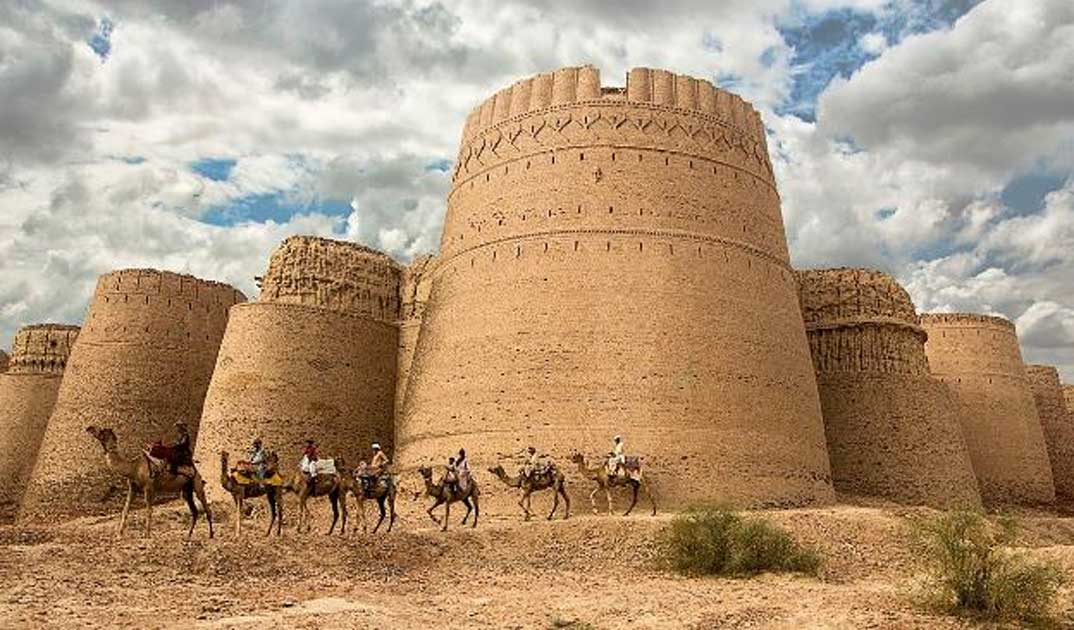
WINTER TOUR ITINERARY OF EAST AND WEST PAKISTAN TOUR
This is an interesting historical tour of Pakistan which shows the ancient cultural heritage and history of the country with live remains. The surprising moments are looking at the olden architecture and systematic buildings of ancient which unbelievable if we compare this technological era and that simple machines era. That shows the creativity of those people. You would see different world and places on this trip.
Day-1
Arrival Lahore Sightseeing Jahangir’s Tomb, Evening Wagah Border closing ceremony:
The sightseeing includes a visit to Mausoleum of Emperor Jahangir –It is built by Jahangir, who ruled the Mughal Empire from 1605 to 1627. The mausoleum is located in Shahdara Bagh in Lahore, Punjab. The mausoleum is a single story structure. The ground plan is a square; the structure consists of a platform with a tall, octagonal tower and a projecting entrance in the middle of each side. The exterior of the mausoleum, including the lowest stage of the towers, is clad with red sandstone facing with rich panel decoration inlaid with marble decorative motives.
Flag Lowering Ceremony –this is something very unique where rangers from both sides of the border put up a fabulous display of parade & ritualistic flag lowering in charged environment with people chanting slogans for their countries. This is something you can only witness here! Amazing place to see people from both sides of the countries (Pakistan & India). Overnight in Lahore.
Day-2
Full day sightseeing of Lahore including Lahore Fort, Badshahi Mosque, Wazir-Khan-Mosque, Minar-e-Pakistan etc.
Lahore Fort – the Fort, locally referred to as Shahi Qila is citadel of the city of Lahore, Punjab, Pakistan. It is located in the northwestern corner of the Walled City of Lahore. The trapezoidal composition is spread over 20 hectares. It is the main point of interest in Lahore. Some details of the palaces remind one of the Taj Mahal. You feel the vibrant history and the grandeur of past times in every corner.
Badshahi Mosque, for a long time it was the largest mosque in the world. Built by the Mughals, it is a living testament to the engineering and architectural grandeur of the Mughal era. The internal capacity of handling worshippers is more than 100,000. As you enter inside the mosque, the vast areas, marble arches, big minarets, marble floors gives you warm welcome.
Lahore Museum – a visit to the Lahore museum is a must for any local and international visitor to Lahore. The history of the Pakistan movement in photographs, the mural of Sadequain, and the treasures of Buddhist civilization are a treat. This museum has the best and largest collection of Buddhist carvings and the only original statue of the starving Buddha. The armaments section, area based on the Indus civilization and the utensils used in the Indus civilization are also of interests. Wazir Khan Mosque – The Mosque is famous for its extensive faience tile work. It has been described as ‘a mole on the cheek of Lahore’. It was built in seven years, starting around 1634–1635 AD, during the reign of the Mughal Emperor Shah Jehan. It was built by Hakim Shaikh Ilm-ud-din Ansari, a native of Chiniot, who rose to be the court physician to Shah Jehan and a governor of Lahore. He was commonly known as Wazir Khan, a popular title bestowed upon him (the word Wazir means ‘minister’ in Urdu and Persian). The mosque is inside the Inner City and is easiest accessed from Delhi Gate. The mosque contains some of the finest examples of Qashani tile work from the Mughal period. Minar-e-Pakistan is a public monument located in Iqbal Park which is one of the largest urban parks in Lahore. The tower was constructed during the 1960s on the site where, on 23 March 1940, the All-India Muslim League at the time of British colonial rule over British India passed the Lahore Resolution, the first official call for a separate homeland for the Muslims living in South Asia, in accordance with the two-nation theory. Overnight stay in Lahore.
Day-3
Early morning drive on motorway to Khewra (sightseeing salt mines), Kallar Kahar and onwards to Ketas (sightseeing Hindu temples) Afternoon drive to Islamabad
Drive to Islamabad and en-route visit to Khewra Salt Mines is a salt mine located in Khewra, Jhelum District, Punjab in Pakistan, about 160 kilometers from Islamabad and 260 kilometers from Lahore. It attracts up to 40,000 visitors per year and is the second largest salt mine in the world. Situated in the foothills of the Salt Range, the Khewra Salt Mines are the oldest in the sub-continent. A tourist train runs inside the mine tunnels. There are some incredible sculptures and structures inside the mine made up of salt. There are plenty of popular souvenir shops in the region where tourists can obtain some incredibly crafted lamps, sculptures and ornaments made up of salt
Katas Temple, a Hindu temple complex situated in Katas village near Choa Saidanshah in the Chakwal district of Punjab. Dedicated to Shiva, the temple has, according to Hindu legend, existed since the days of Mahābhārata and the Pandava brothers spent a substantial part of their exile at the site. Takht Baberi Kala Kahar it is Place where the Mughal Empire Baber used to held meetings on his way to subcontinent. . Rohtas Fort is one of the most imposing historical monuments which represents the Mughal period of architecture style in Pakistan. The Rohtas fort lies sprawling upon a low rocky hill to the north of Jhelum in a bend of the River Ghan (mostly spelled as Kahan). The gigantic fort is founded on steep rocks jutting into the river Kahan, its ramparts protected on the west and north sides by the river and by high hills on its east and south. It was never taken by assault and survives intact to the present day. The main fortifications consist of the massive walls, which extended for more than 4km; they are lined with bastions and pierced by monumental gateways. Drive back to Islamabad for overnight. Later visit to. Drive to Islamabad overnight stay.
Day-4
Full day visit to the twin cities of Islamabad and Rawalpindi
Islamabad is the Modern Federal capital of Pakistan with modern architecture and buildings, Diplomatic Enclave, Parliamentarian Building, Prime Minister Office, Supreme Court Building, Historical Building Monument, Shah Faisal Mosque and Damen-e-Koh are the places worth visiting and experience.
Rawalpindi – is a bustling town strategically located between the Punjab and Azad Kashmir. It has a strong colonial influence and possesses a large military cantonment with the headquarters of the Pakistan Army. It is the sister city of Islamabad, and is essentially the older sister of Islamabad. To locals, Old bazaars, such as the Raja Bazaar, retain their oriental character, with artisans who still create in the old-fashioned way: designing jewelry, pounding out copper and brass items, fashioning cane baskets, hand-carving walnut furniture. Overnight stay in Islamabad.
Day-5
Drive to Peshawar En-route Taxila: Sightseeing of ruins: Jaulian Monastery, Taxila Museum. Taxila is only about 30 kilometers from Rawalpindi, a little off the main highway. Steeped deep in history, the excavations at Taxila take you back 2,500 years into the world of Buddha, Alexander, Asoka and of course the Emperor Kanishka whose imprints are visible to this day. It is here that the world’s most interesting civilizations took roots. It is here that you find endless images of Buddha. You find these in stone and in stucco. Important stages of Buddha’s life are depicted in the numerous panels that have been uncovered here. This great man of peace is depicted in exquisitely carved sculptures and statues glorifying him and his life. Each one of these sculptures is a collector’s pride & visit truck & bus painting workshop. Hassan Abdal (Sikh temple) – It is famous for Gurdwara Sri Panja Sahib, one of the most sacred places of Sikhism. Thousands of Sikhs visit across the world the Gurdwara on the eve of Besakhi every year. Drive to Besham in the afternoon, at Mansehra, we will have a short break to see Ashoka’s Rocks Edicts on boulders dating as back as 3rd century BC. Drive on Motor way to Peshawar for overnight stay dinner at famous streets of NAMAK MANDI.
Day-6
Full day sightseeing of Peshawar: The city of flowers is the provincial capital of Khyber Pukhtun Khaw KPK (formerly known NWFP) North West Frontier Province.
It is an incredible city with exciting historical background, ancient buildings, Mughal Architecture, the old Bazaar, there many to see and enjoy. Above all the unique food and green of Peshawar is an amazing experience of life. Once you visit you should not miss the taste of its traditional food. The people of Peshawar cmed by the shopkeepers in their shops offering tea drinks. Some of the places are worth to visit such as Muhabat Mosque, Old Bazaar, Yadgar Chowk, Qisa Khawani( Story tellers) Bazaar,Mahallah Sethian (it is an interesting buildings amazing architecture of 18th century).Peshawar Museum and village of SIthians with unique architecture are great attractions in Peshawar. I hope you will enjoy the hospitality of the people which shows a surprising image of the country what you hear in the media.
Day-7
Drive to Swat Valley: En-route visit to Takht-e-Bhai. This small town is famous for its Gandhara Buddhist monastery, in Mardan on the road to Swat Valley. There is three hours drive from Peshawar visiting to Takht Bai the ruins of the Ghandahara Civilization worth to visit. Swat Valley is an administrative district in the Khyber Pakhtunkhwa province of Pakistan. It is renowned for its outstanding natural beauty and a major centre of early Buddhist thought as part of the Gandhara Kingdom, which lasted until the 11th century, well after most of the area had converted to Islam Until 1969, Swat was part of the Yusafzai State of Swat, a self-governing princely state. The region was seized by the Pakistani Taliban in late 2007 and its tourist industry decimated until Pakistani control over Swat was re-established in mid 2009. It is four to five hours exciting drive visiting some more historical sites on the way. Full city tour of the town in the afternoon.
Day-8
Drive to Besham Via Shangla Pass: It is exciting journey crossing Sghangla pass 2340 m on zigzag road with lush green hills and thick bushes and trees. The landscape is mesmerizing passing through small markets the people are welcoming and tourist friendly they welcome you to their shops and restaurants offering tea and food for free.It will take you four to three hours from Swat to Besham better leaving in the afternoon.
Day-10 Drive to Islamabad on the 8th wonder of the world Karakoram Highway along the charming towns vieaof Hazara Region of Khyber Pukhtun Khaw Province. You will have great views on the way. farewell dinner at traditional Restaurant Islamabad and overnight stay
Day-11
Fly home we hope you would have enjoyed the trip and have nice journey ahead!!!!
